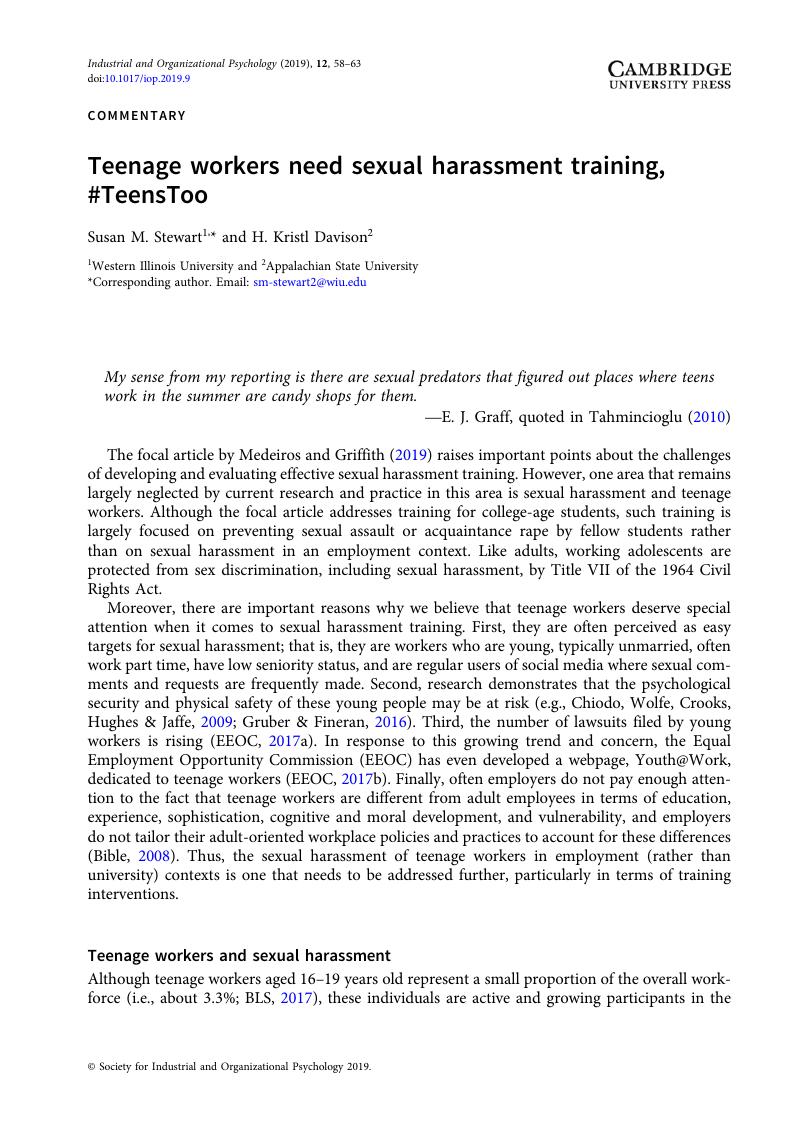Crossref Citations
This article has been cited by the following publications. This list is generated based on data provided by Crossref.
Turner, Nick
Deng, Connie
Granger, Steve
Wingate, Timothy G.
Shafqat, Rabeel
and
Dueck, Paul M.
2022.
Young workers and safety: A critical review and future research agenda.
Journal of Safety Research,
Vol. 83,
Issue. ,
p.
79.
Rauscher, Kimberly
Casteel, Carri
Davis, Jonathan
Myers, Douglas
and
Peek‐Asa, Corinne
2023.
Prevalence of workplace violence against young workers in the United States.
American Journal of Industrial Medicine,
Vol. 66,
Issue. 6,
p.
462.
Siconolfi, Daniel
Davis, Jordan P.
Pedersen, Eric R.
Tucker, Joan S.
Dunbar, Michael S.
Rodriguez, Anthony
and
D’Amico, Elizabeth J.
2023.
Trajectories of Emerging Adults’ Binge Drinking and Depressive Symptoms and Associations With Sexual Violence Victimization: Examining Differences by Sexual and Gender Minority Status.
Journal of Interpersonal Violence,
Vol. 38,
Issue. 7-8,
p.
6085.
Raby, Rebecca
Sheppard, Lindsay C.
and
Lehmann, Wolfgang
2025.
‘It is intimidating going into your first job’: Young teens and workplace safety.
Children & Society,
Vol. 39,
Issue. 1,
p.
94.



